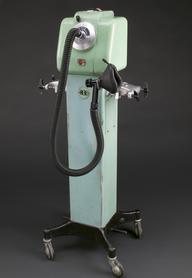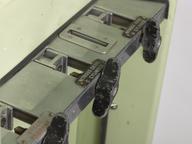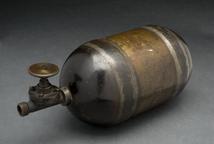





A.G. Levy's regulating chloroform inhaler, made by Mayer and Phelps, English, 1919-1925
Alfred Goodman Levy (1866-1954) invented this type of inhaler to regulate the concentration of chloroform, to match the clinical standards of one per cent to four per cent. Levy believed that the dose of chloroform was crucial in avoiding cardiac problems while under anaesthetic.
Levy discovered in 1911 that it was actually low level doses of chloroform that caused death because of ventricular fibrillation. This is a condition where the ventricle cannot eject blood from the heart. If the patient is unconscious when this happens, they will die without emergency care. Levy’s discovery led to chloroform being abandoned as an anaesthetic.
Details
- Category:
- Anaesthesiology
- Collection:
- Sir Henry Wellcome's Museum Collection
- Object Number:
- A625534
- Measurements:
-
overall: 230 mm x 480 mm x 40 mm,
- type:
- inhaler
- credit:
- Levy, A.G.




